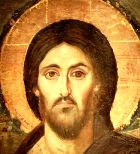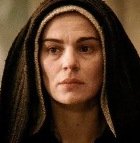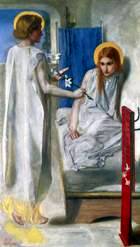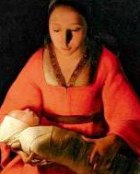Martha, Mary & Lazarus of Bethany
Questions for Bible study groups
- Scroll through the paintings below. You’ll see some well-known paintings and some strange ones – some you may not have seen before.
- Choose a favorite. What moment in the story of Mary and Martha does it show?
- What do you like about it? Not like? What makes it stand out from the others?
- Are there moments in the story that have been overlooked, that you would like to see?
In brief: Martha and Mary are the Yin and Yang of the female personality. Martha is the busy worker and house-keeper, active and productive; her sister Mary is reflective, eager to learn. Martha takes the initiative by fetching Jesus to their house when their brother Lazarus dies; Mary sits and listens to Jesus as he teaches.
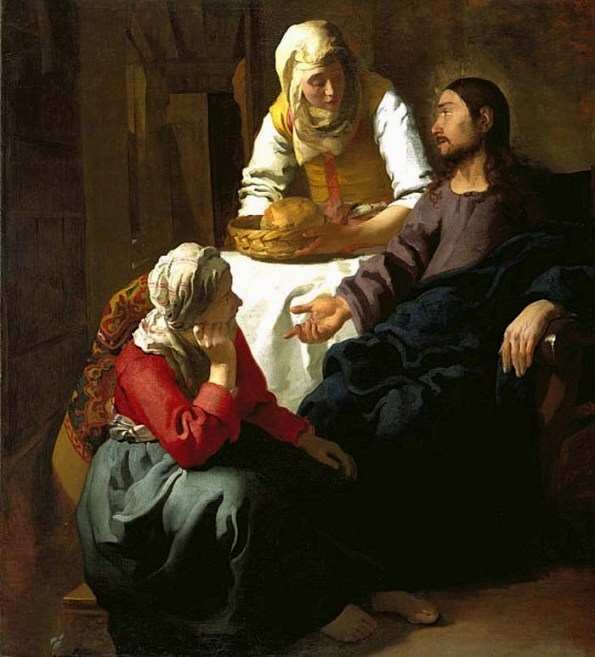
‘Christ in the House of Martha and Mary’, Jan Vermeer van Delft, 1654
Martha is voicing her grievance to Jesus, but the atmosphere does not seem to be strained. The reverse, in fact. This is a quiet family discussion at its best, with each person respectfully expressing what they feel..
Vermeer painted very few religious pictures, and it is typical of him that when he did he used an intimate, rather homely setting. Jesus is relaxed, quiet, and Martha and Mary are comfortable, at ease in their own home. This is not as accomplished a painting are most of Vermeer’s, and so it is assumed that he painted it when he was still only a young man, experimenting with different painterly techniques. Bible reference: Luke 10:38-42
Martha complains about Mary
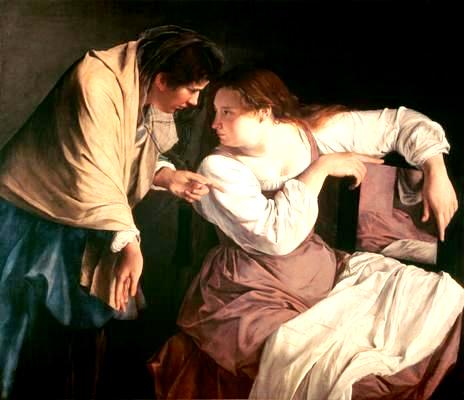
Martha reproving her sister Mary, Orazio Gentileschi, 1620
Notice the body language in this painting by Gentileschi. Martha is conciliatory with her right hand but assertive with her left; she leans forward to show that this is a matter of some urgency; she really needs help in the kitchen. Mary is seemingly relaxed, but her face and right hand leave no doubt about what she intends to do, or about who is at the end of that pointing right hand.
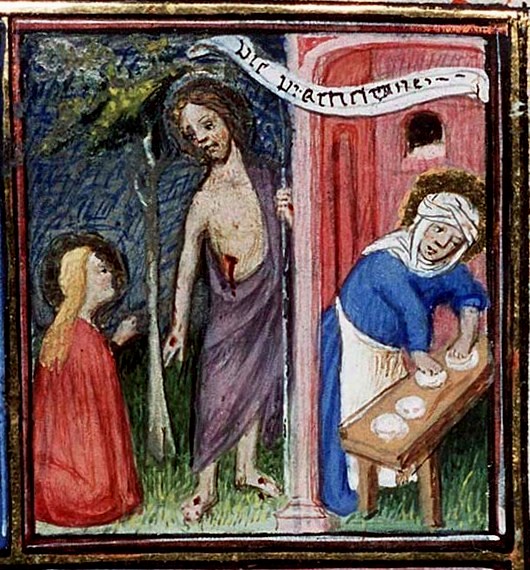
Mary kneels before Christ, Martha prepares food. Vergilius Master, 1410
If you look carefully you will see this is a composite picture – and a rather confusing one at that. Martha of Bethany is hard at work preparing food for her guests (right) and you would therefore expect the woman on the left to be her sister. It is not. It is Mary Magdalene, kneeling at Jesus’ feel on the morning of the Resurrection – the wounds in Jesus’ side, hands and feet make it clear that this scene is post-Resurrection. Is this just a medieval slip-up? One explanation may be that the artist was making a point: that Jesus through his death had made himself the Bread of Life, and so early bread such as the loaves made by Martha were now (at least in a theological sense) superseded. Women in biblical times did much more than food preparation. See Work in the Bible for the range of tasks they performed. Bible reference for this painting: Luke 10:38-42
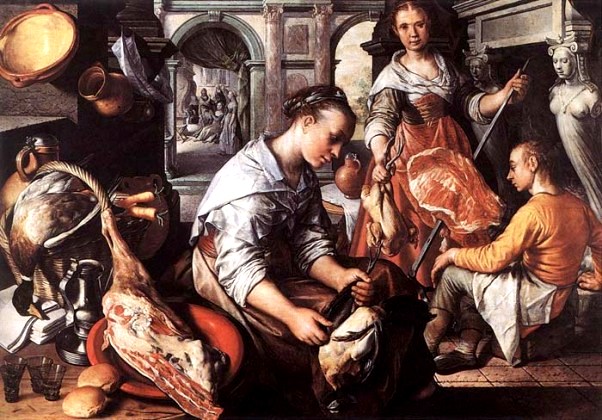
‘Christ at Home with Martha and Mary’, Joachim Beuckelaer, 1565
Martha sits beside a most un-Jewish fireplace, plucking a plump fowl. She has two assistants, but her expressions suggests she is dispirited, and overwhelmed by the amount of work she is expected to do. Mary, meanwhile, sits gracefully in another room, listening to Jesus. Who wouldn’t be fed up with this situation?
Beuckelaer specialized in market and kitchen scenes, celebrating the bounty of Nature. His pictures were said to contrast worldly and spiritual values, and warn of the pleasures of the flesh, but isn’t there a certain ambiguity in this painting. Where, for example, do the artist’s sympathies lie? With the overburdened workers (Martha’s expression says it all) or with the several women listening to Jesus?
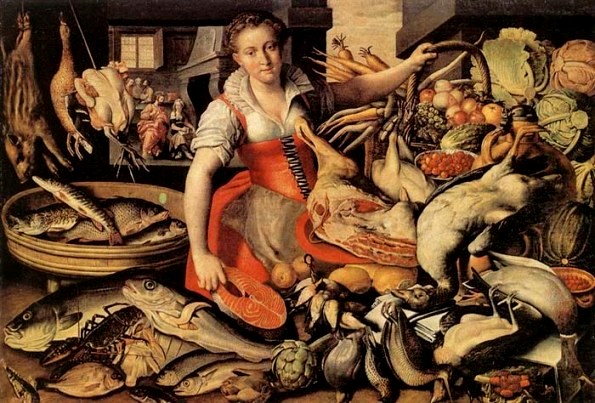
‘Christ in the House of Mary and Martha’, Vincenzo Campi
Martha is in the kitchen, her own personal kingdom. She is strong and able, which is just as well since the quantity of food suggests she will have her work cut out for her, preparing a meal for Jesus and his retinue of disciples. In the background sits Mary, listening to Jesus.
Campi came from a family of painters in Cremona, and was therefore surrounded by artistic creativity from birth. The trick was to find his own style. This he did by concentrating on pictures of food – luscious, plentiful food. The women he painted, too, were bountiful goddesses, and his image of Martha is of someone dedicated to the pleasures of the kitchen. Martha is often portrayed as disgruntled, but Campi’s Martha looks as if she is in her element, happy if somewhat overworked. Bible reference for this scene: Luke 10:38
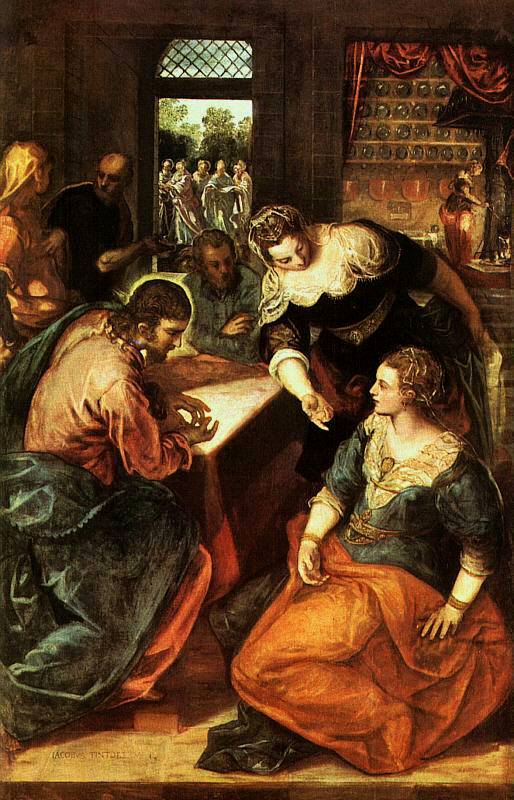
‘Christ in the House of Mary and Martha’, Tintoretto, 1580
Martha has left a well-stocked 16th century kitchen (in the background), and is now remonstrating with her sister Mary. They have a lot of guests – can’t Mary come and help with the food? Mary seems hardly to hear her sister, so focused is she on the face and words of Jesus. Her luminous face becomes the heart of this painting.
Tintoretto became famous for his use of light and perspective – both qualities evident in this painting. Mary’s radiant face and Jesus’ expressive hands are both highlighted – the hands with a background of light that seems to emanate from Jesus himself, and Mary’s face against the rich darkness of Martha’s dress. When he was still very young, so the story goes, Tintoretto’s father noticed his son drawing pictures on the wall, and was struck with the precocious efforts. He sent him to the studio of Titian as a pupil. According to the story, Titian, then nearly sixty, sent the boy back after ten days, refusing to teach him, perhaps because the style of the young Tintoretto was already too individualized to allow him to be a pupil of anyone. From this time, he seems to have been his own master, spending his money on casts and reliefs from which to study his art. Despite this falling out with Titian, Tintoretto is supposed to have aimed for ‘the design of Michelangelo and the color of Titian’. Bible reference for this scene: Luke 10:40
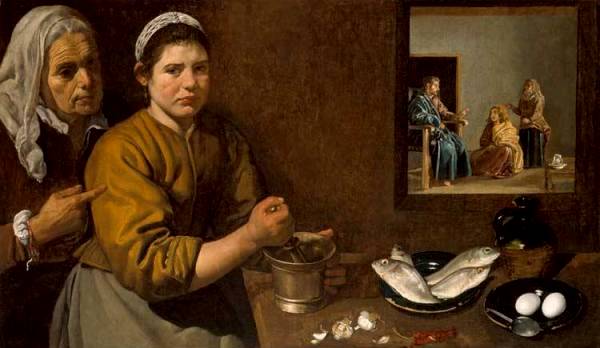
‘Kitchen scene with Christ in the house of Martha and Mary’, Velázquez, 1618
Martha is clearly unhappy. She has been left with the preparation of a meal, while her sister Mary sits entranced at the feet of their honoured guest, Jesus. There is a second figure in the foreground, not mentioned in the gospel story. This painting is given an air of ambiguity by the figure standing behind Martha. Who is she, and what is she meant to represent? Is she pointing towards Mary in the next room, feeding Martha’s resentment at the unfair load of work she has to carry? Or is she pointing to Jesus, telling Martha that she too should be listening, instead of wasting these precious moments in the kitchen? Velázquez was a court painter who was paid to make his courtly subjects appear impassive – a detached demeanour was de rigueur for royalty. On the other hand, he could show emotion in a biblical subject’s face. But what emotion is this girl showing? And what is the old woman saying? Bible reference for this scene: Luke 10:38-39
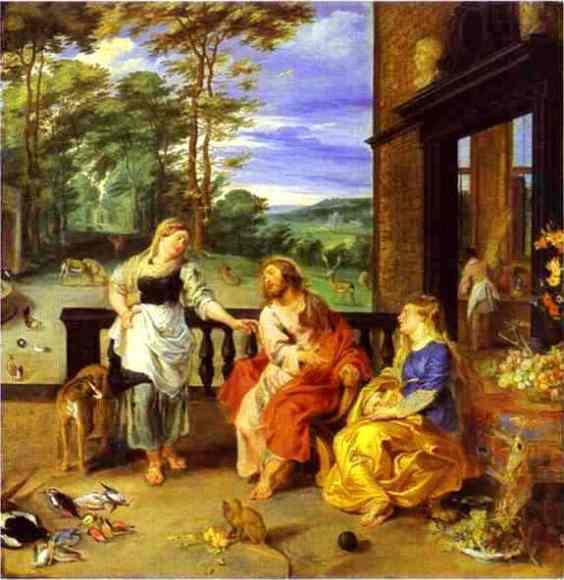
Christ in the House of Martha and Mary, Peter Paul Rubens & Jan Brueghel the Younger, 1628
Jesus and Mary of Bethany have been talking. Now Martha leaves the kitchen in the right rear of the painting and comes to remonstrate with her sister. Jesus turns to listen to her, but his posture shows that he is still preoccupied with the conversation he has been having with Mary. What is a monkey doing (see foreground of painting) in this biblical scene? Introducing a note of whimsy?
This painting is a collaborative effort of two great painters, Rubens and Jan Brueghel the Younger. The faces, figures and perhaps the original design for this painting have been done by Rubens. Everything else was done by Jan Brueghel. The colours are more flamboyant than usual in a religious painting – Rubens was noted for his sensual colours, which lend an air of vibrancy to the scene. The setting is European, not Judean. There is no attempt at historical accuracy, because it was the message of the painting that was important to the viewer of the time. Bible reference for this scene: Luke 10:40
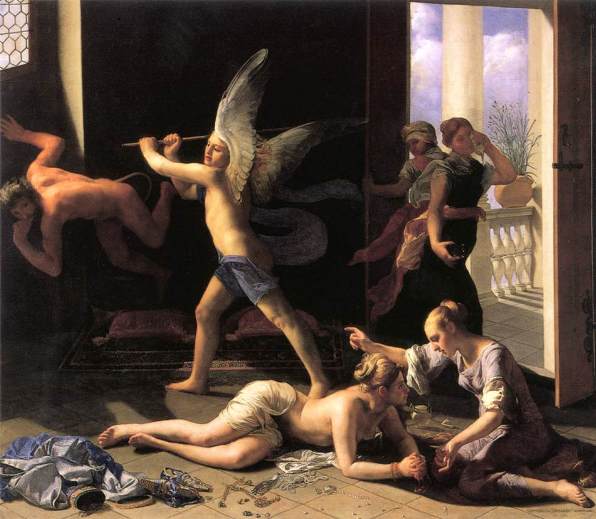
Martha rebuking Mary for her Vanity, Guido Cagnacci, 1660
An angel seems to be driving out the demon of Vanity while Mary, for some reason known only to herself, has taken off most of her clothes. Perhaps Cagnacci was confusing Mary of Bethany with Mary Magdalene (who was incorrectly accused by the medieval Church of being a repentant whore). Martha quite rightly is telling her to go and put something on, for heaven’s sake. Or something like it…
Some people can make anything salacious and Cagnacci was one of these – as is only too apparent in this painting of Martha and Mary. There is no mention anywhere in the authentic gospel story of Martha rebuking her sister for being vain, but since Cagnacci specialized in painting female nudes, he dreamt up one such scenario. Magnificent as the painting is, it has more to do with the fantasies of a young artist who is said to have enjoyed cross dressing, and who did not spend enough time checking his characters’ background story.
Bible reference: None that I know of.
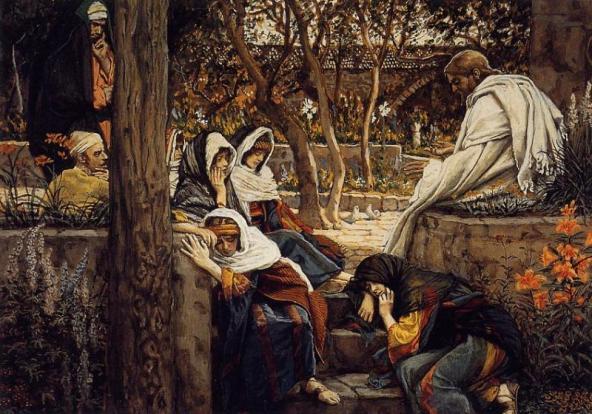
Jesus at Bethany, James Tissot, 1894
This painting is a puzzle. What does it depict?
- The first incident at Bethany, where Martha complains that Mary is not helping her?
- The second incident, where Jesus raises Lazarus from the dead? It cannot be this, because Lazarus was raised before Jesus actually got to the house.
- Nor can it be the third incident, which is set at night inside the house.
Everyone in the painting seems to be grieving, so it can’t be just an ordinary visit that Jesus made to the house at Bethany. Any ideas?

